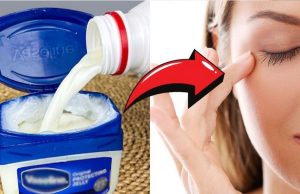
Food expiration dates are meant to provide guidance on when a food product is at its peak quality and when it might be unsafe to consume. Yet, the variety of terms and inconsistent labeling practices can leave people unsure of how to interpret these dates, leading to food waste or even foodborne illness. Understanding the meaning and significance of expiration dates is an important aspect of food safety and quality, and this is critical for making informed decisions in the kitchen.
Expiration dates are not legally regulated or standardized all the time, meaning that companies may use different terms and dating systems. The subject is rife with complexities and nuances that require careful examination. In this article, we will delve into the often-misunderstood world of food expiration dates, exploring their origins, definitions, and practical applications. By shedding light on this topic, we aim to empower consumers with the knowledge needed to navigate grocery aisles and home pantries with confidence.
Why Food Expiration Dates Are So Confusing
The confusion that surrounds food expiration dates stems from the lack of uniformity in labeling practices and the use of multiple terms that can have different implications. Some labels provide a “best if used by” date, while others indicate a “use by” or “sell by” date, each carrying a distinct meaning. In addition, the fact that expiration dates are often based on quality rather than safety can contribute to the uncertainty. Consumers may wonder whether a food item that has passed its expiration date is still safe to eat, leading to either unnecessary waste or potential health risks.

History of Food Expiration Dates
It can be traced back to the 20th century, when the concept of open dating emerged as a way for manufacturers to communicate the freshness and quality of their products. The practice gained traction in the United States in the 1970s, as consumer advocacy groups pushed for increased transparency and food safety standards. However, the lack of federal regulation led to a patchwork of state laws and voluntary guidelines, resulting in varied and sometimes conflicting practices. Over time, the food industry has made efforts to standardize expiration date labeling, but inconsistencies still persist.
The difference between Best if Used By/Before vs Use By vs Sell By
The terms “best if used by/before,” “use by,” and “sell by” each carry specific implications:
“Best if used by/before” indicates the date by which the product is expected to have the best flavor, texture, or overall quality. It is not a safety date, and the food may still be safe to eat after this date, although its quality may decline.
“Use by” is the last date recommended for the use of the product while at peak quality. It is often used for perishable items that may spoil quickly. Unlike “best if used by,” this date may have implications for food safety.
“Sell by” is a date used by retailers to inform their inventory management. It is not intended for consumer use and does not necessarily mean the product is unsafe or of poor quality after this date. Consumers should still use their judgment regarding quality and freshness.
When to actually throw out food
When you determine whether to throw out food, you should consider factors beyond the expiration date, including the type of food, storage conditions, and signs of spoilage. While canned goods and dry pantry items may last well beyond their expiration dates, perishable items like meat, dairy, and produce should be consumed within a certain timeframe to ensure safety. Trust your senses—offensive odors, changes in color or texture, and mold are clear indicators that food has gone bad. Additionally, use safe food handling practices and proper refrigeration to extend the shelf life of your food and prevent spoilage.
You should also understand that expiration dates are not the same as “guaranteed safe” dates. Although they serve as helpful guidelines, they do not guarantee that a food product is free from harmful pathogens or spoilage. In fact, foodborne illness can occur even when food is consumed before its expiration date, especially if it has been improperly handled or stored. As such, it’s crucial to maintain good kitchen hygiene, wash hands and surfaces frequently, and cook foods to recommended internal temperatures to ensure safety.
In spite of the challenges and ambiguities surrounding food expiration dates, there are steps that consumers can take to make more informed decisions.
– Familiarize yourself with the different expiration date terms and their meanings.
– Be vigilant about proper food storage and handling to maximize freshness and safety.
– Use your senses and judgment to assess food quality, especially if an item is past its expiration date.
– Consider creative ways to repurpose leftovers and reduce food waste.

















